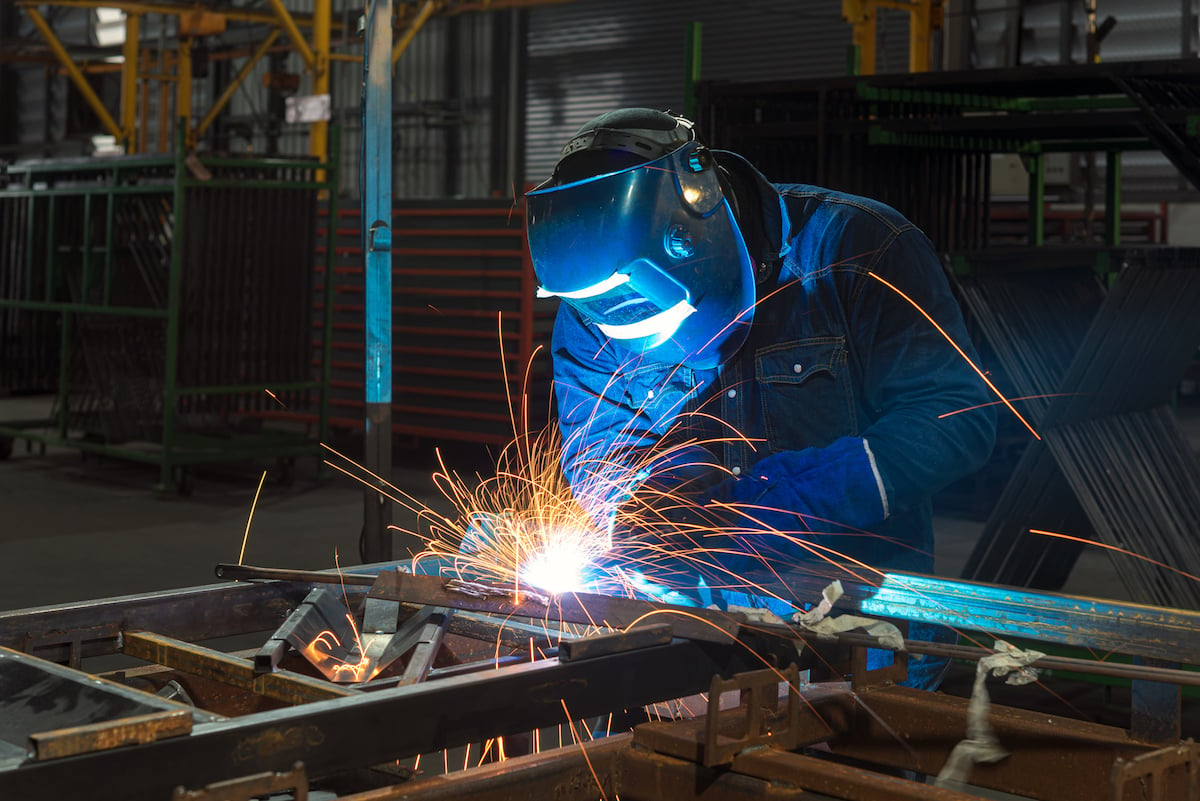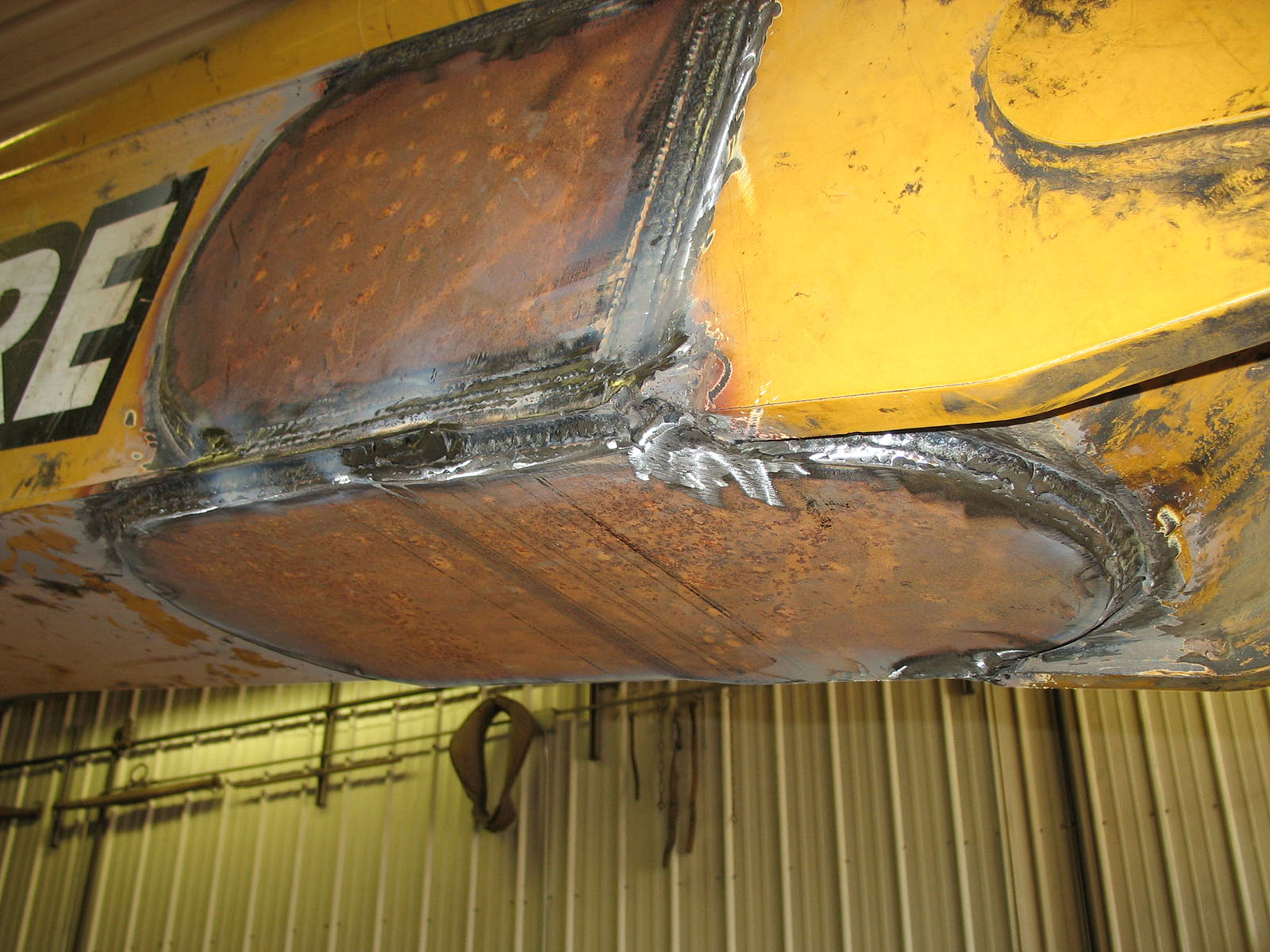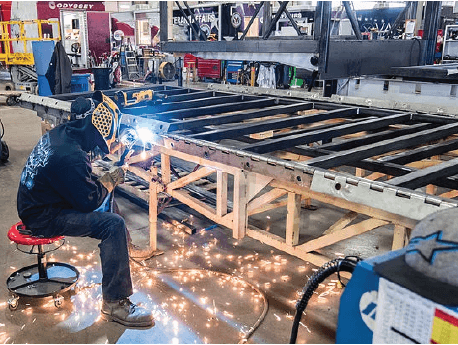What Belgrade Fabrication uses as go-to strategies for dealing with incomplete fusion
Usual Welding Repair Service Issues and How to Address Them Successfully
Welding repair work typically come across a variety of concerns that can endanger the honesty of the end product. Typical troubles consist of poor infiltration, porosity, and misalignment, amongst others. Each issue offers one-of-a-kind difficulties that require certain approaches for resolution. Understanding these problems is vital for welders aiming to enhance their outcomes and skills. This conversation will certainly check out these typical welding fixing concerns and efficient approaches to resolve them.
Poor Penetration
Insufficient infiltration happens when the weld metal falls short to fully fuse with the base product, resulting in weak joints and prospective architectural failures. This problem frequently stems from inadequate heat input, wrong electrode angle, or incorrect welding speed. Welders might experience inadequate infiltration as a result of a miscalculation of the necessary parameters for a certain product density or type. In addition, contamination on the base product's surface area can prevent effective bonding, aggravating the problem. To deal with insufficient infiltration, welders need to guarantee appropriate settings on their tools and preserve a tidy job surface. Regular inspection of welds is suggested to determine any type of deficiencies early, enabling for timely improvements and the avoidance of compromised structural integrity in bonded assemblies.
Porosity
Porosity is an usual issue in welded joints that shows up as tiny gas bubbles trapped within the weld metal. This problem can endanger the stability of the weld, resulting in minimized strength and possible failing under tension. Fabrication. Porosity usually arises from contamination, dampness, or inappropriate welding strategies, which allow gases to run away right into the liquified weld swimming pool. To address porosity, welders must ensure correct surface preparation, keep a tidy workplace, and utilize ideal welding criteria. In addition, choosing the ideal filler material and shielding gas can alleviate gas entrapment. Normal examination and testing of welds can assist determine porosity early, guaranteeing timely corrective actions are taken, thus protecting the quality and integrity of the welded structure
Imbalance
Imbalance in welding can emerge from different factors, including inappropriate setup and thermal growth. Understanding the origin is essential for reliable resolution. A number of modification strategies are offered to straighten parts and guarantee architectural integrity.
Reasons of Misalignment
Welding misalignment usually stems from a variety of underlying concerns that can jeopardize architectural integrity. One primary cause is incorrect fit-up of elements before welding, which can result in spaces and unequal surface areas. Variants in thermal growth throughout the welding process can likewise lead to distortion, particularly if the materials being signed up with have different coefficients of development. In addition, insufficient securing and fixturing may stop working to hold elements safely in position, causing motion during welding. Inadequately conserved tools, including welding machines and tools, might introduce incongruities in the weld bead, additional adding to misalignment. Driver error, stemming from inadequate training or experience, can additionally play a substantial role in developing misaligned welds.

Adjustment Methods Offered
Resolving misalignment properly calls for a mix of restorative methods customized to the details issues available. One usual technique is making use of fixtures or jigs to hold components in the proper setting throughout welding, making certain constant placement. Additionally, preheating the products can help in reducing distortion and boost fit-up. For substantial misalignment, mechanical realignment techniques, such as making use of hydraulic jacks or clamps, can be employed to remedy the position before welding. Post-weld heat therapy might additionally be necessary to relieve stress and anxieties caused by imbalance. Finally, cautious assessment and change during the configuration phase can avoid misalignment issues from ending up being considerable troubles, advertising a smoother welding process and improving overall structural honesty.
Distortion
Distortion is a common difficulty in welding that can arise from numerous factors, consisting of uneven heating and cooling. Recognizing the causes of distortion is vital for implementing reliable avoidance strategies. Addressing this concern not just enhances architectural integrity however additionally boosts the general high quality of the weld.
Causes of Distortion
When subjected to the extreme warmth of welding, materials usually go through modifications that can lead to distortion. This sensation primarily emerges from thermal expansion and tightening during the welding procedure. As the weld area warms up, the material increases; upon cooling, it acquires, which can create interior anxieties. On top of that, unequal home heating across a workpiece can aggravate these tensions, causing warping or flexing. The kind structural welding of product also plays a considerable function; metals with varying thermal conductivity and coefficients of growth may react in a different way, resulting in uncertain distortions. In addition, bad joint design and insufficient fixturing can add to imbalance during welding, increasing the likelihood of distortion. Recognizing these causes is important for effective welding repair and prevention techniques.
Prevention Techniques
Reliable avoidance strategies for distortion during welding focus on controlling warmth input and guaranteeing correct joint style. Maintaining a regular warm input assists to minimize thermal growth and tightening, which can result in distortion. Using strategies such as preheating the workpiece can additionally lower the temperature slope, promoting consistent home heating. Additionally, selecting appropriate joint layouts, such as T-joints or lap joints, can improve stability and decrease stress focus. Applying correct fixturing to protect the workpieces in place additionally aids in keeping placement throughout the welding process. Finally, staggered welding series can distribute warm much more uniformly, avoiding localized distortion. By using these approaches, welders can substantially reduce the probability of distortion and improve the total quality of their welds.
Breaking
Cracking is a typical issue come across in welding repair work, usually arising from numerous variables such as inappropriate cooling prices, material choice, or poor joint prep work. The event of fractures can significantly endanger the stability of the weld, bring about prospective failings during operation. To resolve this issue, welders should initially examine the origin, guaranteeing that products are compatible and properly picked for the particular application. Additionally, managing the cooling rate throughout the welding process is necessary; fast cooling can generate anxiety and lead to breaking. Correct joint layout and preparation additionally add to lessening the danger. Applying these strategies can boost weld high quality and toughness, ultimately minimizing the probability of cracking in ended up weldments.

Insufficient Fusion
A considerable issue in welding repair services is insufficient combination, which takes place when the weld metal does not effectively bond with the base material or previous weld passes - Fabrication. This defect can result in weaknesses in the joint, potentially compromising the honesty of the welded framework. Factors adding to incomplete fusion consist of not enough heat input, inappropriate welding method, and contamination of the surfaces being signed up with. To address this concern efficiently, welders ought to assure correct pre-weld cleansing and surface preparation, in addition to change their welding specifications to accomplish appropriate infiltration and combination. Normal assessment during the welding process can additionally aid identify incomplete combination early, permitting timely corrective actions to improve the general quality of the weld
Overheating
While welding repair services can enhance architectural honesty, overheating provides a considerable obstacle that can result in material degradation. Too much warmth during welding can modify the mechanical homes of metals, resulting in decreased stamina, raised brittleness, and warping. This sensation is particularly important in high-stress applications where architectural integrity is critical. Identifying overheating can entail aesthetic examinations for staining or distortion, along with keeping an eye on look at this site temperature level during the welding process. To reduce the risks connected with overheating, welders need to employ suitable strategies, such as controlling heat input, changing travel rate, and using appropriate filler materials. Additionally, applying pre- and post-weld heat treatments can aid bring back material properties and improve the total top quality of the repair work, making sure lasting efficiency and security.
Often Asked Inquiries
What Are the Usual Indications of a Welding Problem?

How Can I Examine My Welds for High quality?
To examine welds for high quality, one can make use of visual inspections, ultrasonic screening, and radiographic techniques. Each strategy assures structural integrity, determines problems, and confirms adherence to defined requirements, inevitably boosting the integrity of the welded joints.
What Security Preventative Measures Should I Take While Welding?
When welding, one ought to focus on security by wearing suitable personal safety tools, making certain appropriate ventilation, protecting combustible products away, keeping a tidy workspace, and knowing environments to avoid injuries and crashes.
Can I Fix a Weld Without Redesigning the Entire Joint?
Repairing a weld without redoing the entire joint is feasible, depending upon the damages (Montana Mobile Welding and Repair Belgrade Welding). Strategies such as grinding, including filler material, or using a welding process can effectively resolve details flaws while protecting the bordering e6011 framework
What Equipment Are Essential for Efficient Welding Services?
Crucial devices for reliable welding repair services consist of a welding machine, cable brush, mill, safety gear, clamps, and filler materials. Each device plays an essential function in making certain high quality and safety and security throughout the repair service process. Porosity normally emerges from contamination, moisture, or inappropriate welding techniques, which allow gases to leave into the molten weld pool. Badly kept equipment, consisting of welding equipments and tools, may introduce disparities in the weld bead, further adding to imbalance. When subjected to the extreme warmth of welding, products frequently undergo adjustments that can lead to distortion. Cracking is an usual issue come across in welding fixings, often resulting from different factors such as inappropriate cooling rates, product option, or inadequate joint prep work. A considerable issue in welding repairs is incomplete fusion, which occurs when the weld metal does not appropriately bond with the base product or previous weld passes.